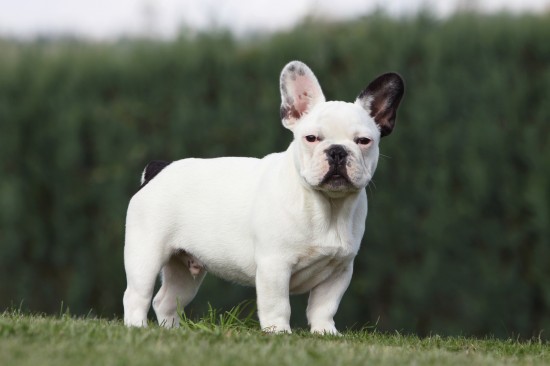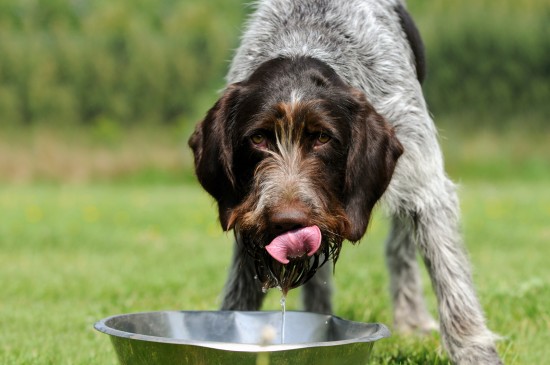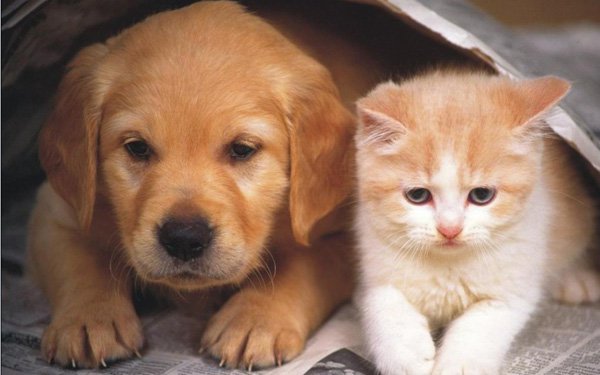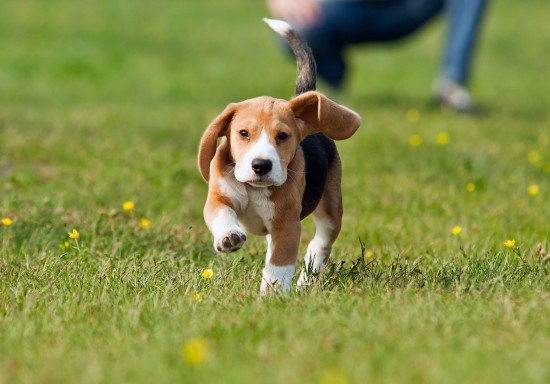
The Siberian Husky is a cool weather dog that needs plenty of room to exercise in. A properly fenced in yard would be ideal. They may run off so keep them under control when outside. They also prefer to live with more of their kind as they were a pack animal. They can get along with other dogs but may not get along with other pets. They generally accept older children, especially if well socialized with them. As a reminder, never leave a child unsupervised with a puppy or dog.
*Approximate Adult Size. The approximate adult size (two years old or older) of the male Siberian Husky is 21 to 23.5 inches to the withers (highest point of the shoulder) and 45 to 60 pounds. The female ranges from 20 to 22 inches to the withers and 35 to 50 pounds.
*Special Health Considerations. Most dog breeds have certain inherited health problems associated with that specific breed and the Siberian Husky is no exception. Although considered a very healthy breed, be on the look out for Laryngeal Disease, eye problems and Canine Hip Dysplasia (genetic based looseness in the hip joint that can lead to arthritis pain and lameness). This disease list is an informative guideline only. Other diseases may also be significant threats, please contact your veterinarian for a complete list.
She should visit the veterinarian several times in the first year for shots, boosters and check up. Then, as an adult, she should visit the veterinarian yearly for shots and check up. As she gets older, six years and on, she should visit the veterinarian twice a year for check ups and shots. Remember; avoid feeding your dog sweets.
*Grooming. The Siberian Husky has a thick double coat. The inner coat is dense and soft. The outer coat is medium or a bit shorter in length, oily and coarse. She should be brushed regularly. Brushing will help her maintain a clean and healthy coat, help you keep a closer eye on her health and strengthen your emotional bond with her.
Her teeth should be brushed at least twice a week with toothpaste and toothbrush designed for dogs. Brushing removes the accumulation of plaque and tartar which can cause cavities (rarely) and periodontal disease. Dog periodontal disease can lead to pain, loss of teeth, bad breath and other serious disease.
Her toenails may need to be examined for growth and clipped regularly. The toenails of the rear feet grow slower than the toenails of the front feet.
*Life Span. The Siberian Husky can live between 10 and 14 years with proper nutrition, medical care and excellent living conditions.
*History. The Siberian Husky comes from Russia where they were used primarily as sled dogs. They were first registered by the American Kennel Association in 1930.
Some Registries:
*Siberian Husky Club of America
*UKC United Kennel Club
*NKC National Kennel Club
*CKC Continental Kennel Club
*APRI Americas Pet Registry Inc.
*AKC American Kennel Club
*FCI Federation Cynologique Internationale
*NZKC New Zealand Kennel Club
*KCGB = Kennel Club of Great Britain
*ANKC = Australian National Kennel Club
*ACR = American Canine Registry
Litter Size: 6 to 8 Siberian Husky puppies
Category: Working
Terms To Describe: Great endurance, graceful, quick, sweet, gentle, strong, loving, dependable.
*SPECIAL GOOD POINTS
Makes an ok watch dog.
A cold weather dog.
Not a barker.
Very trainable.
Highly intelligent.
*SPECIAL BAD POINTS
May take off on an adventure, especially males.
Makes a poor guard dog.
May suffer in hot weather.
They like to howl.
*Other Names Known By: Artic Husky
*Every dog is an individual so not everything in this information may be correct for your dog. This information is meant as a good faith guideline only.
 Thyroid Problems In Dogs
Thyroid Problems
Thyroid Problems In Dogs
Thyroid Problems
 Stud Dog Contracts And What They Should Contain
Stud Dog Contract
Stud Dog Contracts And What They Should Contain
Stud Dog Contract
 Reasons Why Dogs Drink Excessive Amounts Of Water
Reasons Why Dogs
Reasons Why Dogs Drink Excessive Amounts Of Water
Reasons Why Dogs
 Diseases That Are Dangerous For Your Dog
Diseases That Are Dangerous For Your Dog
While
Diseases That Are Dangerous For Your Dog
Diseases That Are Dangerous For Your Dog
While
 Is Their A Right Way To Punish A Dog?
Is Their A Right
Is Their A Right Way To Punish A Dog?
Is Their A Right
Copyright © 2005-2016 Pet Information All Rights Reserved
Contact us: www162date@outlook.com